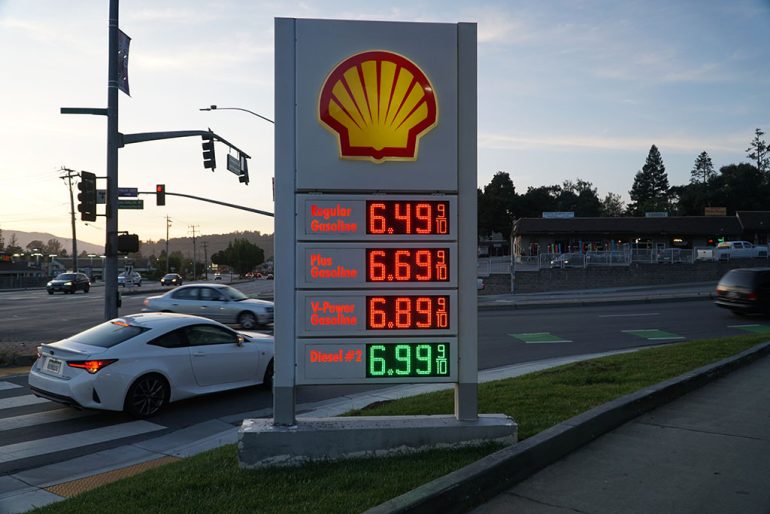California’s Daring New Local weather Guidelines Promise Cleaner Air however May Spike Fuel Costs : Automotive Addicts


Automotive

In a pivotal resolution, California’s air regulators have accepted updates to the state’s Low Carbon Gasoline Commonplace (LCFS), aiming to push the needle additional on local weather motion. Nevertheless, the California Air Assets Board’s (CARB) new guidelines might come at a value to residents on the pump, with analysts suggesting fuel costs might rise considerably within the coming years.
What’s Altering with California’s Low Carbon Gasoline Commonplace?
The LCFS, initially adopted in 2009, is California’s pioneering coverage designed to decrease the carbon depth of transportation fuels. By setting stringent emissions discount targets, the LCFS incentivizes producers to cut back the environmental influence of gasoline and different transportation fuels. This newest set of revisions, accepted after a prolonged public assembly, raises this system’s targets even additional. It additionally allocates funding for the growth of zero-emission car (ZEV) charging stations throughout the state, laying the groundwork for a cleaner transportation infrastructure.
One notable shift is the plan to section out subsidies for capturing methane emissions from dairy farms, which has been a contentious level. Beforehand, methane seize was rewarded for its local weather advantages because the captured methane might be repurposed as a biofuel. Critics argue that this method favored biofuel manufacturing when California ought to focus extra completely on direct assist for electrical automobiles and infrastructure.
Environmental and Financial Considerations
California’s up to date LCFS proposal has attracted a spread of criticisms from environmentalists, economists, and the oil trade. Environmental teams like Earthjustice contend that the LCFS has diverted an excessive amount of focus towards biofuels as an alternative of absolutely committing to zero-emission car (ZEV) assist. Adrian Martinez from Earthjustice known as this system “a bridge for combustion fuels” that will now want re-evaluation, given the federal political panorama and the current election of former President Donald Trump to a second time period.
On the similar time, state lawmakers and analysts are cautious of potential fuel value will increase. Local weather economist Danny Cullenward estimated that the LCFS updates might result in fuel costs rising by as a lot as $1.50 per gallon by 2035, though CARB has cautioned in opposition to making direct predictions as a result of financial uncertainties. For communities already fighting excessive residing prices, the potential influence on the pump raises concern. State Assemblymember Tom Lackey, a Republican representing the thirty fourth District, argued that California’s residents, significantly these in lower-income areas, can not afford such a steep improve in gas costs.
CARB’s Place
In keeping with CARB’s management, the long-term advantages of the LCFS program will outweigh any near-term prices. Steven Cliff, CARB’s govt officer, famous that the LCFS has already made lower-cost, low-carbon options extra accessible in California, positioning the state as a frontrunner in sustainable gas innovation. By funding ZEV infrastructure, the board hopes to speed up California’s objective of carbon neutrality by 2045.
Supporters of the LCFS, similar to EV Realty’s chief industrial officer, Suncheth Bhat, see this system as essential for transitioning to a clean-energy future. “The LCFS is among the strongest, transformational insurance policies now we have to hurry up the transition to electrical automobiles,” Bhat stated, highlighting the crucial function of government-led local weather coverage in creating systemic change.
How Federal Coverage May Affect California’s Local weather Targets
With former President Trump returning to workplace, California’s distinctive local weather insurance policies might once more face federal pushback. Trump’s administration famously revoked California’s capacity to set its personal tailpipe emissions requirements in 2019, an influence that was later restored by President Biden and upheld in courtroom. The state’s capacity to take care of unbiased local weather rules might be challenged once more, probably hindering California’s progress on emissions discount and car electrification.
This political uncertainty solely provides to the strain on California’s regulators. CARB hopes the LCFS will bridge the hole till California achieves full electrification, however specialists like David Pettit from the Heart for Organic Variety argue {that a} stronger give attention to electrical automobiles is required, particularly in gentle of attainable regulatory battles with federal companies.
California’s up to date LCFS coverage represents a daring step ahead within the state’s quest for a cleaner future. However the complexities of power economics, mixed with the social and political ramifications of rising gas prices, imply that CARB’s resolution might result in extra than simply environmental change.
As California heads towards its carbon-neutral targets, the talk over biofuels, fuel costs, and EV incentives will seemingly intensify. Balancing these elements will probably be important if California is to steer on local weather change whereas holding gas prices manageable for its residents. Whether or not the up to date LCFS finally succeeds in bringing cleaner, extra reasonably priced gas choices to Californians stays to be seen—however for now, the state’s method will undoubtedly function a check case for local weather coverage nationwide.
Supply: Related Press
FOLLOW US TODAY:





